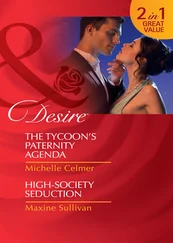I Modernity Between the Social Logic of the General and the Social Logic of the Particular
Throughout modernity, a social logic of the general and a social logic of the particular have competed with one another. This basic assumption is the starting point from which this book proceeds. The logic of the general is associated with the social process of formal rationalization, while the logic of singularities is related to a process of culturalization. Whereas, during classical – and, above all, industrial – modernity, processes of singularization and culturalization represented antipodes to the dominance of the general and were structurally subordinate to it, in late modernity they have become guiding and formative forces for the whole of society. At the same time, rationalization has changed its form and largely become a background structure for processes of singularization. In order to make a case for this thesis, I will first have to explain certain concepts and my historical schematic. My first goal in this part is to delineate the social logic of the general in classical modernity and its practice of formal rationalization (1). The next section will describe the concept of singularities, the features of the social logic of the particular, and its practices (2). This will be followed by a discussion of the connection between singularization and culturalization, and remarks will also be made about the revision of a strong concept of culture that revolves around processes of valorization and the question of “value” (3). With this background, it will then be possible to turn to the historical and social development from premodern societies to late modernity in order to identify phases of cultural transformation in which the social relation between the general and the particular has changed (4).
1 The Social Logic of the General
Modernity and Generality
What is modernity? What are the central features of modern society in its classical form? In my view, the answer is clear: the structural core of classical modernity, since its beginnings in eighteenth-century Western Europe, is a social logic of the general that encouraged the standardization, formalization, and generalization of all entities of society. Modernity fundamentally reformulated the world of traditional societies by thoroughly and relentlessly imposing new forms of the general on their practices, discourses, and institutional complexes. As an overarching praxis, it could be said that modernity “enacted generality” in the world.
Such an understanding of classical modernity can be associated with a particular sociological theory, but it elevates this theory to a more abstract level as well: modernity should be understood first and foremost as a process of formal rationalization. For its part, formal rationalization means that modernity transformed society in such a way that traditional customs were replaced by large-scale complexes of predictable rules, which in turn entailed technically or normatively regulated manners of behavior. Formal rationalization can be derived from the telos of optimization, whose ultimate aims are the efficient processing of nature and the transparent ordering of society. This understanding of modernity as an elementary process of rationalization is not, however, self-evident. In fact, if one were to ask sociologists about the central features of classical modernity, one would receive a great variety of answers. Often enough, and especially in Germany, modernity is equated with a process of functional differentiation. What is meant by this is, accordingly, the differentiation of specialized and functional subsystems (the economy, law, politics, mass media, education, etc.), each of which follows its own self-imposed logic and structure. Although it was Niklas Luhmann who formulated this approach most systematically, its basic ideas extend back to theories about the division of labor. On the international stage, however, another interpretation has been more influential. Going back to Karl Marx, this interpretation treats capitalism as the central organ of modernity in the form of an economic and technological formation that is oriented toward the uninterrupted accumulation of capital and leads to its vastly unequal distribution. It goes without saying that each of these approaches has identified important characteristics of modernity. Neither, however, is sufficient. From my perspective, the structure of modernity will only become comprehensible if one begins with the process of rationalization, 1as Max Weber argued most convincingly. 2Authors as varied as Georg Simmel, Martin Heidegger, Theodor W. Adorno, Hans Blumenberg, Michel Foucault, and Zygmunt Bauman would go on to espouse this idea as well, though each in his own way. 3
The understanding of modernity as a process of rationalization can and must, however, be understood in a more abstract and fundamental way than has previously been the case, for what lurks behind rationalization is the social logic of the general. By rationalizing the social world, modern practices attempt to impose their general forms and configure the world according to them. In praxeological terms, the social logic of the general – with its “generalization,” and by means of “doing generality” – encompasses four interconnected complexes of social practices that have an empirically open relationship to one another: practices of observation, evaluation, production, and appropriation. Whenever a society is subjected to rationalization and generalization, these four sets of practices are always at work.
Here, practices of observing the world (in science, the economy, the state, etc.) are unambiguously and unilaterally oriented toward the general – that is, systems of general concepts and schemata have been developed and applied in order to make it possible to register, measure, and differentiate every element of the world (people, nature, things, etc.) as a particular example of general patterns. In the case of practices of evaluating (for instance, in law or in school), those elements of the world that fit into the schema of the general are clearly treated positively and given preference for seeming “correct” or “normal.” 4Practices of producing (for instance in industry or education) are here at their heart oriented toward systematically creating elements of the world (things, subjects, spaces, etc.) that correspond to the schemata of the general and, in extreme cases, are even identical and fully interchangeable with one another. Finally, practices of appropriating the world now typically take the form of objectively dealing with things, subjects, etc., that are regarded as standardized and interchangeable entities – for instance, by treating objects as functional and useful, or subjects as having a certain role or function.
That said, it would be a misperception to identify modernity entirely with the social logic of the general and its formal rationalization. To do so would be to fall victim to the totalization of the general that characterizes the rationalistic discourse of modernity (in philosophy and sociology, above all) and to formulate no more than a partial understanding of it. Even classical modernity cannot entirely be understood in terms of the logic of the general, and late modernity even less so. At this point, however, we will have to deal with the features of the general and its dominance in an “artificially” pure and rationalistic form before moving on to the next step, which will be to distinguish it from the social logic of singularities.
Typifications and Rationalizations
Historically speaking, it would of course be short-sighted to claim that a social logic of the general did not exist until the beginnings of modernity in the late eighteenth century or that there had not been any formats of formal rationality until 250 years ago. In a certain respect, both already existed in premodern societies – in the archaic (preliterate and nomadic) and in the traditional (high-cultural) societies as well. However, it is necessary to distinguish two different modes of the social logic of the general: typification and rationalization.
Читать дальше












